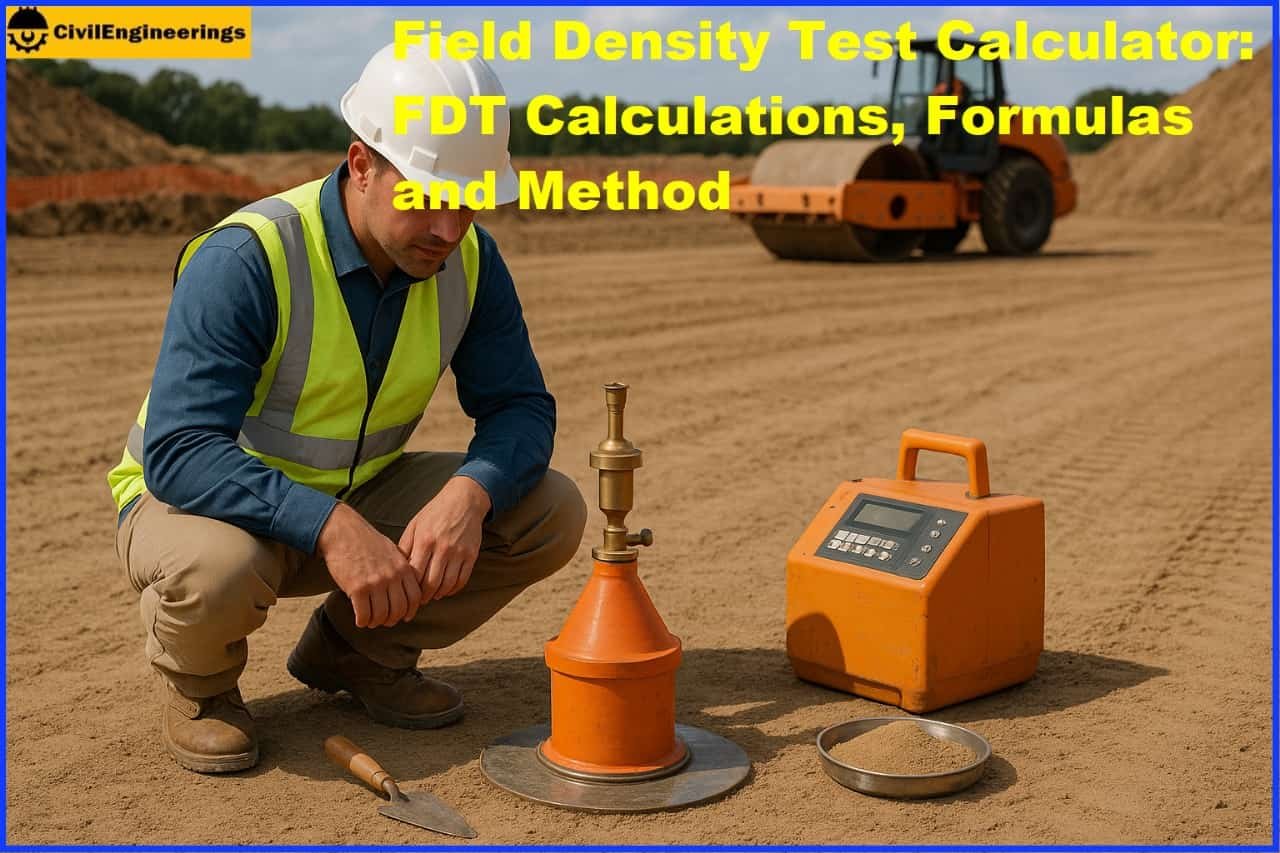Field Density Test (FDT) Calculator
Field Density Test (FDT) Calculator for Soil Compaction
Welcome to our Field Density Test (FDT) Calculator, an essential tool for civil engineers, construction professionals, and students. Understanding soil compaction is critical for ensuring the stability and durability of foundations, roads, embankments, and other civil engineering structures.
This calculator simplifies the complex process of determining soil density and the percentage of compaction achieved in the field. By accurately assessing compaction, you can verify that the soil meets project specifications, preventing issues like excessive settlement, reduced bearing capacity, and pavement distress.

Understanding the Field Density Test (FDT)
The Field Density Test (FDT), often performed using the sand cone method, is a common in-situ test used to determine the dry density of compacted soil. This dry density is then compared to the maximum dry density (MDD) obtained from a laboratory compaction test (like the Proctor test) to calculate the relative compaction.
How to Find the Input Values
Mass of Moist Soil:
Procedure: After excavating the test hole, carefully collect all the moist soil removed from the hole.
Measurement: Weigh this collected moist soil. This value is your "Mass of Moist Soil."
Units: Ensure you record the unit (grams, kilograms, or pounds) and select the corresponding unit in the calculator.
Volume of Hole:
Procedure: The volume of the excavated hole is typically determined by filling it with a material of known density, such as calibrated sand (in the sand cone method) or water (in the rubber balloon method). The mass of the filling material used, combined with its known density, allows for the calculation of the hole's volume. Volume = Mass / Density
Measurement: This is the volume of the actual hole excavated in the field.
Units: Record the unit (cubic centimeters, cubic inches, cubic meters, or cubic feet) and select it in the calculator.
Water Content (%):
Procedure: Take a representative sample of the moist soil collected from the hole.
Measurement: Determine the water content of this sample using standard laboratory procedures (e.g., oven-drying method).
Units: This is a percentage. Enter the numerical value (e.g., for 15.2%, enter 15.2).
Maximum Dry Density (MDD):
Procedure: This value is obtained from a laboratory compaction test (e.g., Standard Proctor Test or Modified Proctor Test) performed on a sample of the same soil type. The MDD represents the maximum dry density that can be achieved for that soil type at its optimum moisture content.
Measurement: This is a density value determined in the lab.
Units: Ensure you use the correct unit (g/cm³, g/in³, lbs/ft³, kg/ft³, or kg/m³) and select it in the calculator.
How This Calculator Works
This calculator performs the following steps to determine the soil's compaction percentage:
- Unit Conversion: All input values (Mass of Moist Soil, Volume of Hole, and Maximum Dry Density) are first converted to a consistent base unit system (grams and cubic centimeters) internally. This ensures accurate calculations regardless of the input units chosen by the user.
- Calculate Moist Density (ρ_moist):
Formula: Moist Density = Mass of Moist Soil / Volume of Hole
- Calculate Dry Density (ρ_dry):
Formula: Dry Density = Moist Density / (1 + (Water Content (%) / 100))
- Calculate Compaction Percentage:
Formula: Compaction Percentage = (Dry Density / Maximum Dry Density (MDD)) * 100

